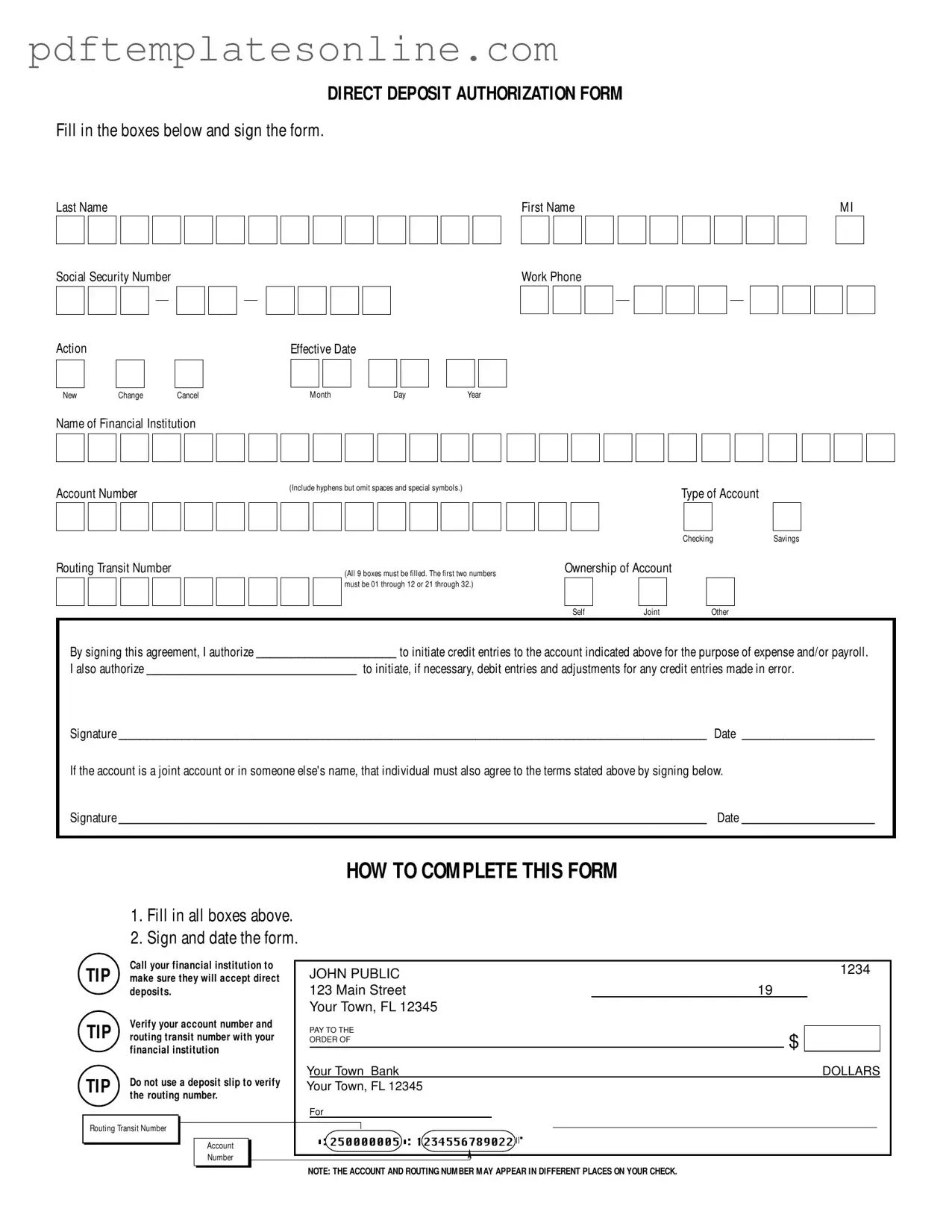Filling out a Generic Direct Deposit form may seem straightforward, but many people make mistakes that can delay payments or cause other issues. One common error is failing to fill in all required fields. Each box on the form must be completed, including the last name, first name, Social Security number, and account details. Missing even a single box can lead to processing delays.
Another frequent mistake involves providing incorrect account numbers. It’s essential to double-check the account number and the routing transit number with the financial institution. Misplacing a digit or omitting a hyphen can result in funds being deposited into the wrong account. Always verify these numbers before submitting the form.
People often neglect to sign and date the form. A signature is a critical component that authorizes the financial institution to process the direct deposit. Without it, the form is incomplete, and the request cannot be processed. Ensure that both the employee and, if necessary, the joint account holder sign the form.
Some individuals use deposit slips to verify their account and routing numbers, which is not advisable. The routing number may not be correctly represented on a deposit slip. Instead, it is better to contact the financial institution directly to confirm these details.
Another mistake occurs when individuals do not indicate the type of account correctly. The form requires you to specify whether the account is a checking or savings account. Failing to do so can lead to confusion and misdirected deposits.
People sometimes overlook the effective date of the change or new deposit. Not specifying when the direct deposit should start can result in payments being delayed. It is crucial to clearly indicate the desired effective date to avoid interruptions in payroll or other payments.
Additionally, individuals may forget to include information about the ownership of the account. If the account is joint or in someone else's name, the other account holder must also sign the form. Neglecting to do this can lead to complications in processing the deposit.
Another common error is not following the instructions provided on the form. The form includes specific tips and instructions that can help avoid mistakes. Ignoring these can result in unnecessary errors that could have been easily prevented.
Finally, some individuals fail to communicate with their employer or payroll department about the changes. It’s important to notify the relevant parties that a new direct deposit form has been submitted. This ensures that everyone is aware of the change and can update their records accordingly.
